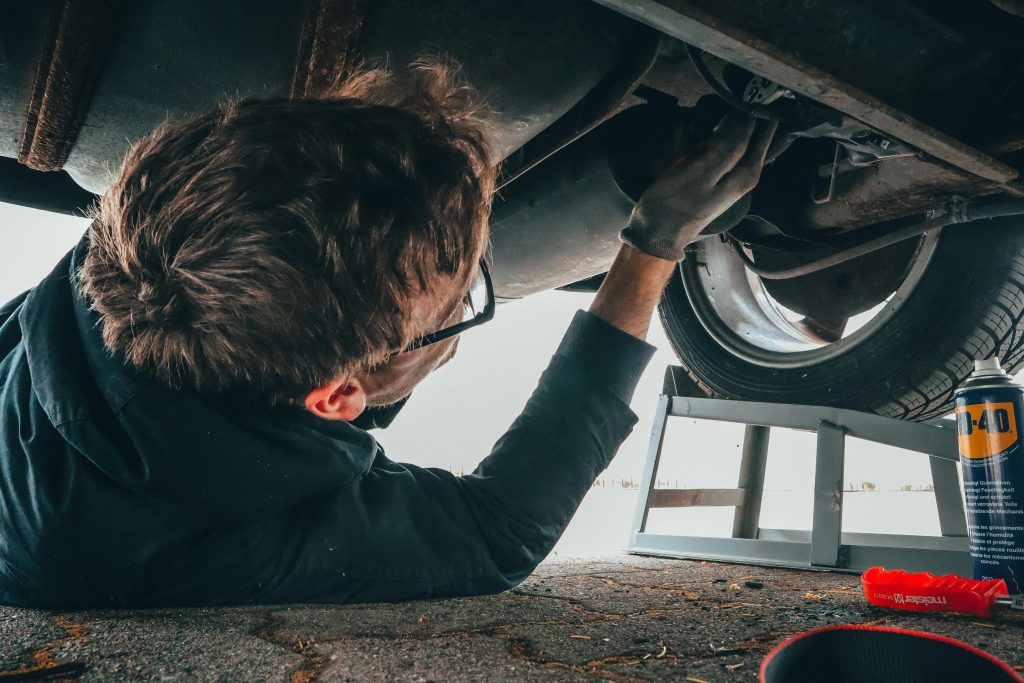How to Tell If Your Car Needs a Mechanic or Just an Oil Change

Is your car making strange noises or just feeling a bit sluggish? Before you panic and rush to the mechanic, let’s figure out if it’s a simple oil change or something more serious! Regular maintenance is crucial for keeping your vehicle running smoothly and can save you money in the long run by preventing costly repairs. In this post, we’ll help you identify when to tackle a DIY oil change and when it’s time to seek professional help.
1. Understanding Your Car’s Needs
1.1 The Importance of Regular Maintenance
Regular oil changes play a vital role in maintaining your vehicle's health. Fresh oil lubricates engine components, reduces friction, and prevents wear and tear. Neglecting oil changes can lead to sludge build-up, overheating, and ultimately, engine failure. By keeping up with regular maintenance, you can extend the life of your vehicle and avoid expensive repairs down the line.
1.2 Common Signs Your Car Needs Attention
Recognizing the signs that your car needs maintenance can save you from costly repairs. Common symptoms include:
-
Strange Noises: Grinding, squeaking, or knocking sounds.
-
Warning Lights: Dashboard indicators like the check engine light.
-
Poor Performance: Sluggish acceleration or rough idling.
Confidence-Building Section: Recognizing these signs early can save you from costly repairs down the line!
2. When an Oil Change is Enough
2.1 Signs You Just Need an Oil Change
Certain indicators suggest that an oil change is due, including:
-
Oil Change Light: Illuminates on your dashboard.
-
Dark or Gritty Oil: Check the dipstick for oil color and consistency.
-
Mileage: Following the recommended intervals based on your driving conditions (typically every 3,000 to 7,500 miles).
2.2 DIY Oil Change Checklist
If you’re considering changing your oil yourself, here’s a simple checklist to follow:
-
Gather Tools: Oil filter wrench, socket wrench, oil catch pan, funnel, rags, safety gloves, and goggles.
-
Prepare the Vehicle: Park on a level surface, turn off the engine, and engage the parking brake.
-
Drain Old Oil: Remove the drain plug and let the oil drain into the catch pan.
-
Replace Oil Filter: Use an oil filter wrench to remove the old filter and install the new one.
-
Add New Oil: Pour the new oil into the engine using a funnel.
-
Check Oil Level: Use the dipstick to ensure the oil level is correct.
-
Dispose of Old Oil: Take it to a recycling center.
Tips on Choosing the Right Oil and Filters: Always consult your owner’s manual for the correct oil type and filter specifications.
3. When to Call a Mechanic
3.1 Red Flags That Indicate a Bigger Problem
If you notice any of the following signs, don’t ignore them! Your car might be trying to tell you something important:
-
Persistent Warning Lights: Such as the check engine or oil pressure light.
-
Unusual Smells: Burning oil or a sweet smell could indicate coolant leaks.
-
Fluid Leaks: Puddles under your car can signal serious issues.
3.2 Common Mechanical Issues vs. Oil Change Needs
Here’s a quick comparison of common mechanical issues versus oil change needs:
-
Engine Noise: Could indicate internal damage, not just old oil.
-
Oil Leaks: May require gasket or seal replacements, not just an oil change.
-
Overheating: Often related to cooling system failures, not oil quality.
4. How to Choose the Right Mechanic
4.1 Tips for Finding a Trustworthy Mechanic
Finding a reliable mechanic can be daunting. Here are some tips:
-
Research: Look for reviews and ratings online.
-
Certifications: Check for ASE certification or other qualifications.
-
Word-of-Mouth: Ask friends and family for recommendations.
4.2 Questions to Ask Your Mechanic
When visiting a mechanic, consider asking these essential questions:
-
What is the problem with my vehicle?
-
What repairs are necessary and why?
-
Can you provide a detailed estimate?
-
What parts will be used?
-
How long will the repairs take?
Confidence-Building Section: Being informed and asking the right questions can empower you as a car owner!
5. Conclusion
In summary, understanding your car's needs is crucial for maintaining its health and performance. Regular oil changes are essential, but recognizing when to seek professional help can save you time and money.
Engagement Hook: Remember, a little knowledge goes a long way in keeping your car running smoothly!
We’d love to hear your experiences or questions in the comments below! Don’t forget to subscribe to Dingdoor for more car maintenance tips and advice.
By following this guide, you can confidently navigate the world of car maintenance, ensuring your vehicle stays in top shape for years to come."

